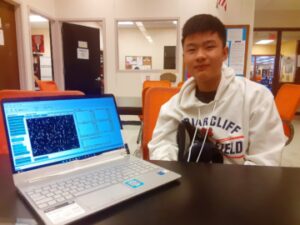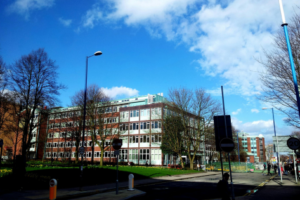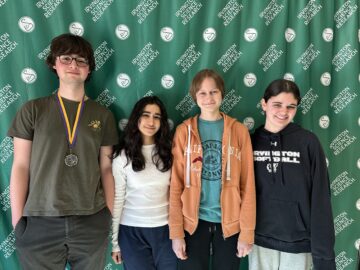
Teaching himself a new programming language. Building an online pandemic model. Working 20-hour days over the summer. Briarcliff High School senior Jason Starr poured his heart and soul into his science research project and it paid off.
Big time.
Jason was recently awarded the prestigious 2022 Milton Fisher Award for Innovation and Creativity – recognition given to only nine students in the country.
It all began when Jason was watching Andrew Cuomo’s briefings during the pandemic.
“I saw that the interventions for Covid-19, such as mask mandates and school closures, were usually one-size-fits-all for the entire state,” he said.
“I decided that a great way to try to help solve this problem is to make a localized model that can simulate Covid -19 on a local basis and help decision-makers select the best interventions for their own community,” he said.
“With Jason’s model, you can pinpoint an area and it will give you an idea of how effective certain interventions would be,” said Briarcliff Science Research teacher Gilana Reiss, who worked with Jason last year and over the summer.
Jason simulated his model on Westchester County, but it can work in any community, such as a school district, and even for as small a group as two people. After multiple tests, Jason said his model proved to achieve an impressive accuracy rate of 84.2%.
The model consists of simulated people, which he called “agents,” categorized by age, race and compliance.
Other inputs include the type of intervention that the user would want to use, or a Covid variant, such as Alpha, Delta and Omicron. The model is based on Covid studies on patients.
He created the model from scratch, using the programming language NetLogo, which he taught himself. His background of studying computer science at the school certainly helped.
“I took AP Computer Science and Introduction to Programming at Briarcliff,” he said.
Jason credits his mentor, Penn State University post PhD student Morgan Kain, with helping him come up with the model.
“I read one of his articles when I was in my first year of science research class and emailed him. He responded and became my mentor in the class.”
Jason also credits his love of inquiry-based projects in helping keep him motivated and hopes to have a career in research.
“I would like to use sociology, public health and technology and mix them all together,” he said.
“I really enjoy what I do,” he said. “Sometimes, if I’d start working on finding literature review for my model, I would do it all day long and just keep going because I am just so passionate about it.
“Jason is an exceptional student and one of our top science research students,” Ms. Reiss said. “He is brilliant, very creative and has lots of ideas. He is extremely driven and very passionate about this project and about science research and public health. He absolutely has a great career ahead of him.”
For his part, Jason is grateful for Reiss and all the guidance he received.
“I would not have been able to do this without help from my teachers and from my mentor,” he said. “I feel very honored to have my research recognized.”
From the Milton Fisher Scholarship website:
Witness to the political disagreements arising from blanket-policy in entire states/countries during the Covid -19 pandemic, Jason created a disease model to simulate spread based on local community population variation rather than on a country or statewide generalized scale. After researching the differences among the Social Determinants of Health (SDoH) in many localities, his model was more able to predict disease spread outcomes in particular locales, accounting for inequities among them. While his research was predominantly with Covid -19 and developing the agent-based model for that disease, if the specific constraints such as susceptibility, mortality rate, recovery time and incubation period on any disease are known, his model can calibrate these with age and racial factors as well as local population demographic composition, population racial clustering, area size, area transportation, vaccination ratio, interventions and compliance rate to simulate population-specific disease spread predictions. This area-specific risk assessment can be used by local governing boards to plan policy that optimizes functionality within acceptable risk confines, allowing for more targeted action that is best for the specific community. A rising senior, Jason intends to major in Public Health.






